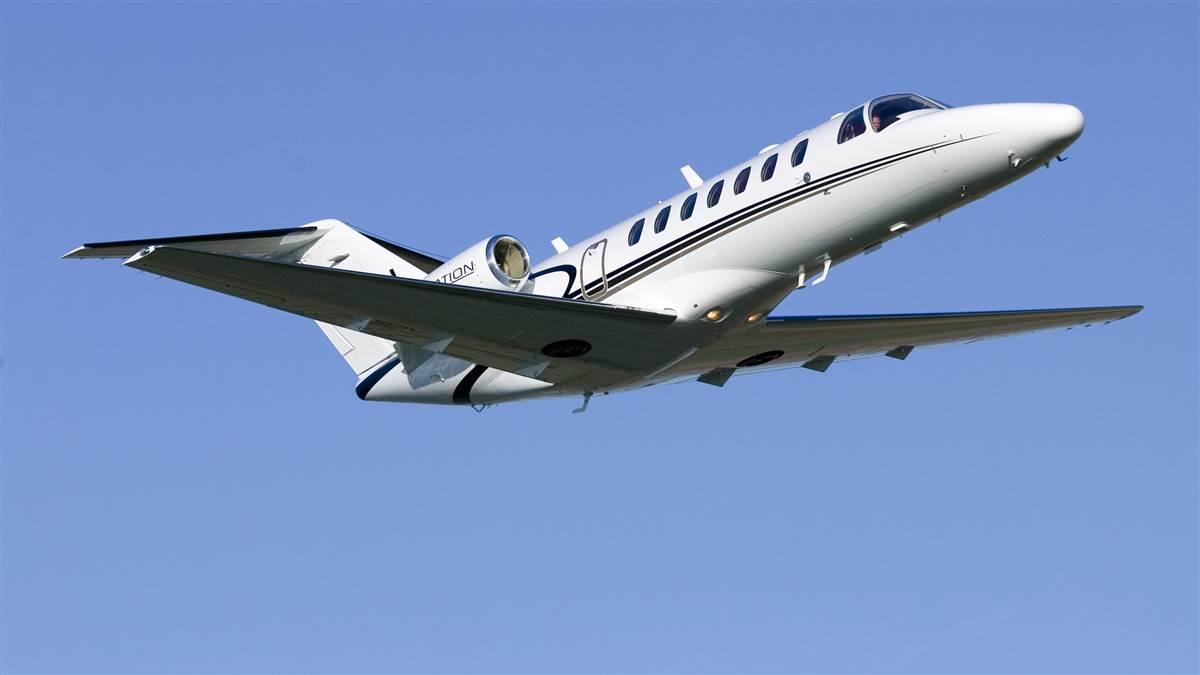Family resemblance
The M2 and its big brother have much in common—but they’re not the same


After several years of flying Cessna Citation M2s, for example, I recently got checked out in its more powerful sibling, the CJ3+. The two airplanes have pretty much identical systems, avionics, and flying characteristics. The gear and flap speeds are unchanged in the two models, the seats are exactly the same, and even the style and placement of headset hooks is familiar.
But my first approach and landing in the 3+ showed me there are important differences, too, and a technique that works like a charm in one is totally inappropriate for the other.
“VREF plus 20,” Jeff Dyanzio, my coach and co-pilot, said with a hint of dread while we were on a two-mile final approach. His voice carried the clear tone of disapproval that any pilot would fly so fast. But that’s what I was doing on purpose. We were about to land on a busy runway used by larger and faster corporate jets, and I intended to fit in by keeping the CJ’s speed up as long as possible.
A moment later, for emphasis, Dyanzio added, “Still plus 20.”
OK, if he insists, I’ll take the not-so-subtle hint and slow the airplane down. I reduce engine power from 62 percent N1—my go-to power setting on final approach in the M2—to about 50 percent. Yet the CJ3+ airspeed barely budges.
“VREF plus 18,” Dyanzio says grimly. I know the M2 takes 10 seconds to decelerate 20 knots to VREF once engine power is reduced to idle while configured for landing on a typical three-degree glide slope. Since a normal M2 VREF is about 100 knots, my habit is to fly about 120 KIAS on final, then pull the power levers to idle at about 100 feet agl and a quarter-mile from the runway threshold. That technique consistently results in smooth touchdowns on or near the aiming point.
The steepest part of my learning curve took place on a deadhead leg, so no passengers had to suffer through my awkward new-to-me airplane introduction.

But the CJ3+ is a significantly larger aircraft. Its empty weight is about the same as the M2’s maximum gross weight. And the bigger airplane’s engines put out more residual thrust at idle. It doesn’t slow down so quickly, and as Dyanzio’s comments suggest, my too-fast approach led to a rather graceless landing that was longer than it should have been. And worse was still to come.
The moment I applied the brakes, the CJ3+ darted right, then back to the left. Once both brakes were applied evenly, and the landing flaps and spoilers were deployed, the anti-skid brakes behaved just fine. But their initial grabbiness caught me by surprise. Another meaningful difference even though the braking systems in the two airplanes look the same on paper.
Fortunately, the steepest part of my learning curve took place on a deadhead leg, so no passengers had to suffer through my awkward new-to-me airplane introduction. The next leg included a takeoff at maximum gross weight for a three-hour leg from South Florida to the Northeast, and that’s where the CJ3+ really shined.
Despite a warm day and a heavy load, the airplane accelerated quickly, leapt off the runway, and climbed all the way up to its service ceiling of 45,000 feet with alacrity. It flew smoothly with the autopilot in Flight Level Change mode without hunting as the M2 sometimes does in the thin air of the upper flight levels. And the CJ’s higher service ceiling, faster true airspeed, and nearly identical mileage in cruise were impressive. It’s easy to understand why these airplanes are so sought after in the marketplace.
Descent planning and performance felt familiar, and approach and reference speeds were nearly identical to the M2. Instead of intentionally flying fast on approach, however, I followed Dyanzio’s advice and slowed the airplane to its published approach speed—and subsequent touchdowns and rollouts were much improved. I reminded myself before landing to be gentle during the initial brake application and that seemed to reduce any grabbiness.
During flight, it was odd looking out the side windows and not seeing the M2’s telltale “swooplets.” But I could get used to the CJ3+’s elegant long wing instead. And for the benefits of more speed, more range, a higher ceiling, and a more generous useful load, I’d even be willing to slow down during the final approach segment and tread lightly on the brake pedals. Who wouldn’t?
After a half-dozen CJ3+ flights totaling about 15 hours, the differences in the two airplanes hit home when I stepped back into the M2. The familiar jet felt smaller and sportier—but not nearly as powerful. Daniel Stegman, a pilot and manager for both Citations, provided a helpful piece of advice about “negative transfer” in which habits formed in one airplane model are misapplied to another.
“Make sure you remember to power back after takeoff in the M2,” he said. “The M2 will feel a bit anemic compared to the CJ3+, so it’s easy to forget to reduce the power to the climb setting. The only time pilots ever seem to forget that is right after they get out of the 3+. It’s never a problem any other time.”
Negative transfer, it turns out, can be a two-way street. 



